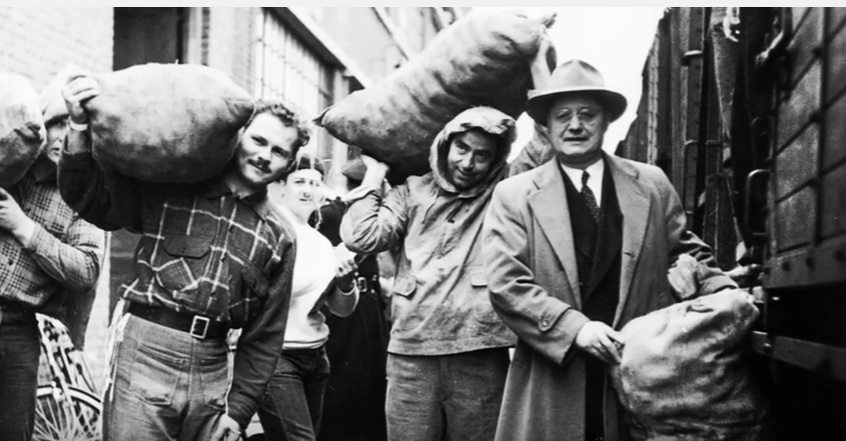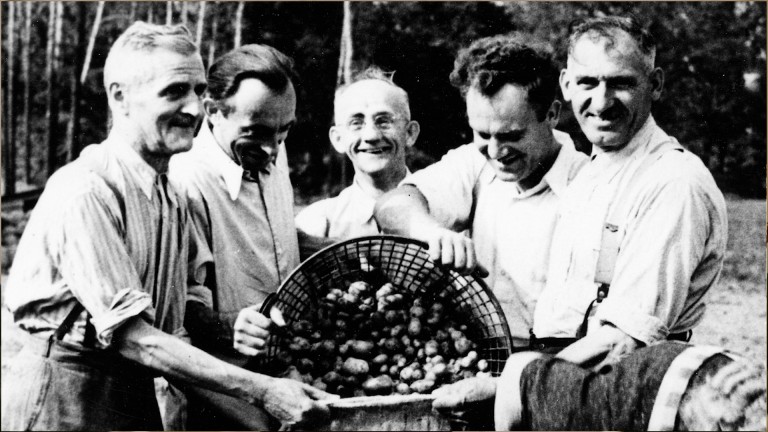 In February 1946, nine months after the close of a devastating world war, President Cornelius Zappey and his wife arrived from America among the war-tattered Dutch Saints to reorganize and revitalize the Netherlands Mission.
In February 1946, nine months after the close of a devastating world war, President Cornelius Zappey and his wife arrived from America among the war-tattered Dutch Saints to reorganize and revitalize the Netherlands Mission.
Jacob Schipanboord, who served as the acting mission president, had done great work among the Saints. However, the war had taken its toll on many of the 3,200 members leaving them bitter, angry, and resentful towards their former enemies, the Germans. Many of the Saints were without food and clothing. Branches were in desperate need of staffing, administration, and adequate housing. Bombs had annihilated the mission home in The Hague which was in need of windows, doors, repairs, and furniture. And the institution of full-time proselyting was also necessary. Thus, the Netherlands Mission was in dire need of repairs, both temporal and spiritual.
The tiny country of Holland began experiencing the terrors of World War II in late 1940 when the German occupation with its tanks and soldiers overran the country in only five days. By obliterating the center of Rotterdam, including the LDS chapel there, the German Luftwaffe hoped to break any Dutch resistance in the first major air strike aimed at a city – a blitzkrieg that would ultimately claim the lives of 40,000 civilians.
Nazi troops occupied Holland for five traumatic years leaving many of the Dutch citizens torn between loyalty to their countrymen and survival by any means necessary. Many of them, to protect family and friends, cooperated with the German regime, others resisted, and still others did both. Numerous Dutch soldiers, resisters, and Jews were either executed or taken to prison camps. Among them was Anne Frank.
In the aftermath of the war, the Dutch received welfare relief from the United States and instructions about the welfare plan. As a means to sustain life, they decided to plant potatoes. President Zappey tried to get the people to work together for the good of the community by growing potatoes and green vegetables to help feed the poorest among them. During the war, every family had a vegetable garden to grow vegetables. The elderly and the physically challenged however did not and as a result, many of them starved to death.
 After some months, word came that the people could expect an abundant harvest of potatoes. Then one day, President Walter Stover of the German Mission came and told of the hunger and desolation of the Saints in Germany. President Zappey asked the Dutch members to give some of their potato harvests to help feed the Germans. Though feelings of animosity still lingered among many of the members, they agreed to help the Saints in Germany.
After some months, word came that the people could expect an abundant harvest of potatoes. Then one day, President Walter Stover of the German Mission came and told of the hunger and desolation of the Saints in Germany. President Zappey asked the Dutch members to give some of their potato harvests to help feed the Germans. Though feelings of animosity still lingered among many of the members, they agreed to help the Saints in Germany.
In the first weeks of November 1946, ten trucks with more than 70 tons of potatoes started to the border where they met with opposition from the Dutch government which prohibited the export of its valuable food resource. President Zappey and then President of the European Mission, Elder Alma Sonne, tried for days to get permission to deliver the food to the German members. President Zappey appealed to many of the government officials preaching a message of brotherly love for those who were once enemies. He finally received permission to proceed, but only on the condition that the potatoes were to be eaten and not planted.
Eventually, 90 tons of donated potatoes and 60 tons of donated herrings were shipped to Germany. A few years later when the North Sea flooded and those same Dutch members were in need, the German Saints showed their gratitude by sending welfare supplies to the Netherlands.
This tender act of kindness and forgiveness from the Dutch Saints falls directly in line with the teachings of the Apostle Paul to the Saints in Ephesus. He taught, “And be ye kind one to another, tenderhearted, forgiving one another, even as God for Christ’s sake hath forgiven you” (Ephesians 4:32). The Lord Himself also taught, “I say unto you, be one; and if ye are not one ye are not mine.” (Doctrine and Covenants 38:27).
Additional Resource: Pioneers in Every Land
About Keith L. Brown
Keith L. Brown is a convert to The Church of Jesus Christ of Latter-day Saints, having been born and raised Baptist. He was studying to be a Baptist minister at the time of his conversion to the LDS faith. He was baptized on 10 March 1998 in Reykjavik, Iceland while serving on active duty in the United States Navy in Keflavic, Iceland. He currently serves as the First Assistant to the High Priest Group for the Annapolis, Maryland Ward. He is a 30-year honorably retired United States Navy Veteran.


 Watch a video about the restoration of the gospel on lds.org
Watch a video about the restoration of the gospel on lds.org
What a wonderful story of hope and healing and forgiveness.